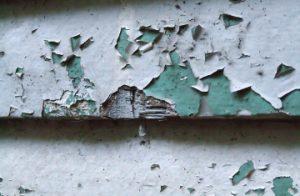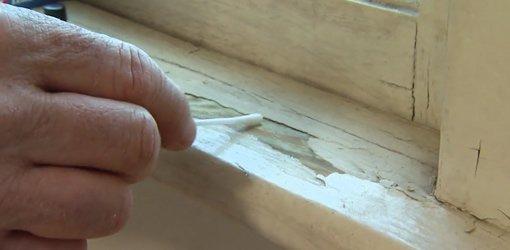Owatonna Home Inspection Tech: Home Inspector 507-721-2159

Paint doesn’t last forever, and any home built before 1978 will almost certainly have lead-based paint. Even if your home has been painted recently, there is a good chance that underneath a few layers of newer paint is a layer of dangerous lead paint. A lead-based paint inspection can identify chips and dust that are a danger to you and your children.
What is lead-based paint?
For centuries, lead was used in paint to improve its coverage and durability. White lead paint was especially popular for houses and toys because it could be washed without losing its texture. But behind the sheen of fresh paint, a danger lurked.
In the 1970s, the dangers of lead paint became especially apparent. Lead chips from peeling paint, toys with cracked surfaces, and areas of high friction, like windows, made it easy for children to purposely or accidentally ingest lead.
When lead gets into the bloodstream, it limits the body’s ability to absorb oxygen. Lead poisoning in children, whether acute or chronic, can lead to nervous system damage, speech and language problems, seizures, behavioral problems, and even death in some cases.
In adults, lead exposure can result in premature birth, cardiovascular and kidney problems, and anemia.
Prevention is, of course, the best medicine, and the first step is an inspection from a certified lead inspector.
When should you get a lead-based paint inspection?
The Federal government banned the use of lead paint in consumer products in 1978. Any home built before then potentially has lead paint on either an exterior or interior surface (even if it is below several layers of newer paint).
Landlords and sellers are required by law to disclose any lead paint hazards though an inspection is recommended to verify any concerns. If you are renovating your home, the EPA has guidelines in place to protect you and your community from lead dust contamination.
What you can expect from a lead-based paint inspection.
Hire the right company. The Environmental Protection Agency (EPA) has a strict set of guidelines that inspectors must follow. Inspectors that are not certified may put you at risk for lead exposure through incomplete or inaccurate test findings.
Furthermore, a combined lead-based paint inspection and risk assessment can give you the information you need to keep your family safe. The EPA maintains a list of certified lead inspectors in each state.
Know the difference. A lead-based paint inspection is different than a lead risk assessment. An inspection will check the surfaces inside and outside your home to let you know if and where lead paint is located. Lead paint that is in good condition, and can remain undisturbed, is not necessarily considered a hazard.
A risk assessment, on the other hand, will let you know if there are lead paint hazards. A risk assessment will also provide an action plan to mitigate lead paint hazards.
What to expect. With a combined lead-based paint inspection and risk assessment, a certified inspector will thoroughly examine your home. A portable x-ray fluorescence (XRF) machine is one of the most common methods of lead paint detection, but a trained assessor will also send paint, dust, and soil samples to a lab for more thorough testing.
If your home or the home your looking to buy was built before 1978 or your concerned about having lead in your home, give us a call today to schedule your Lead Paint Inspection!